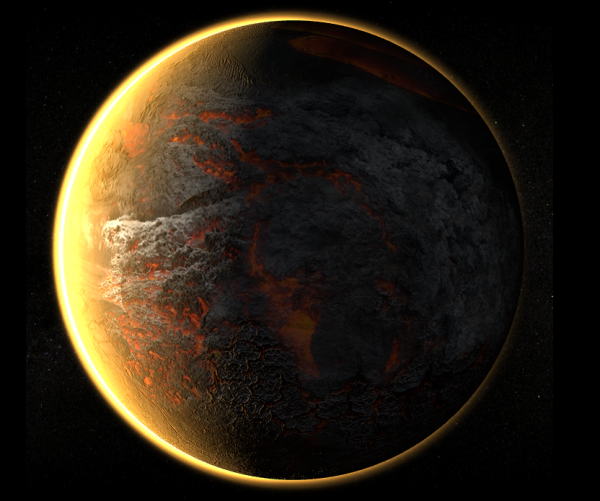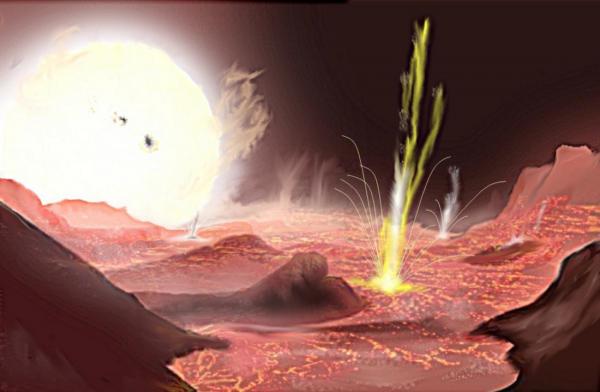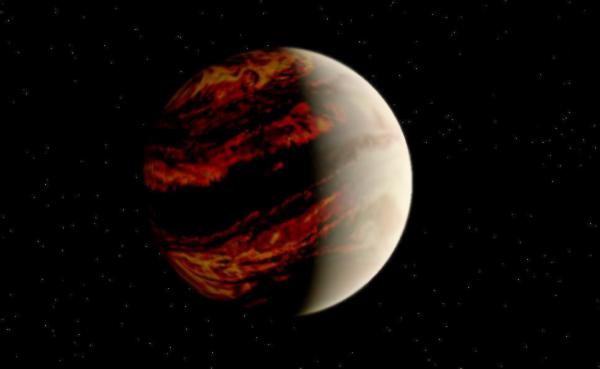BY LETTER
Pyrothalassic Type
Lava Worlds | |
 Image from LordOther | |
| Chariot, a lavaworld near the luminous star Algorab | |
Most pyrothallassic planets have thick, vapour-ridden atmospheres which help to insulate the surface and inhibit cooling; but some worlds (especially low-gravity lava worlds) have relatively thin envelopes with intermittent cloud cover.
Planets of this type may have one, or several, different sources of heat that causes the surface to become partially or fully fluid. Very young planets and those which have recently suffered a major impact may have extensive lava fields for extended periods, until the planet cools down (unless the world is subject to more impacts). Other planets are subject to extreme tidal stresses from nearby objects, and these may retain molten seas for an extended period.
Lava worlds fall into three main subtypes; the first has a relatively thin ocean of newly extruded lava which has erupted from a solid crust, which remains in place. Under the crust is generally a fluid mantle which itself overlays a solid core.
The second subtype is hot enough for the entire crust to have melted as well; this type is fluid all the way to the solid core, which remains solid because of pressure. The third type is fluid all the way from the surface to the core; this subtype of planet is generally smaller than other worlds of this type.
 Image from Steve Bowers | |
| An evaporating planet which is very close to its star, with extensive lava fields | |
In a system with multiple planets the heat from the local star can be augmented significantly by tidal heating; this is most significant in compact systems with several worlds orbiting close together, and can result in an ocean of lava on a planet which would otherwise have a solid surface.
Another mechanism which can cause a planet to become pyrothallassic is the normal progression of a star out of the main sequence, a process which often leads to severe heating of the innermost worlds in a solar system. Such planets are often engulfed by the star if and when it becomes a red giant.
 Image from Steve Bowers | |
| Kepler-10b, a pyrothallasic world with a mass 4 x Earth's and a temperature of 1800K | |
Related Articles
Appears in Topics
Development Notes
Text by John M. Dollan
Additional material by The Astronomer and Steve Bowers
Initially published on 20 November 2008.
Additional material by The Astronomer and Steve Bowers
Initially published on 20 November 2008.






